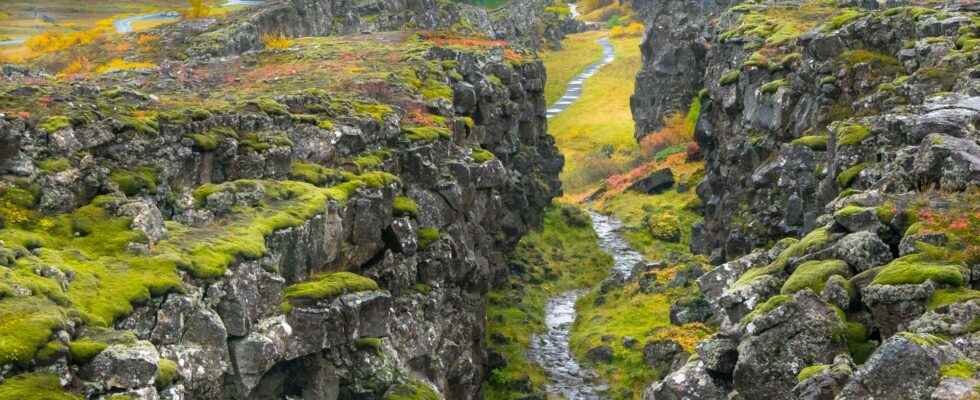The outer part of the Earth is divided into different rigid units called lithospheric plates. These plates have the ability to move above the asthenosphere. They can thus fragment, move apart or collide. This is the well-known process of plate tectonics. But the driving force behind this gigantic ballet is far from simple.
You will also be interested
[EN VIDÉO] A billion years summed up in 40 seconds: plate tectonics Researchers have modeled the movements of tectonic plates over the past billion years.
All plates lithospheric move on the surface of the Earth, of a movement slow but continuous. Their speeds are variable: from a few millimeters per year for the slower (Antarctica, Eurasia, Africa) to 10 centimeters per year for the fastest (Pacific plates, Nazca, Australia). The origin of these movements is complex and requires diving inside our Planet. Because if we often evoke convection movements within the mantle, the engine of plate tectonics is actually a set of processes that involves the whole of Earth’s dynamics.
The importance of decoupling between lithosphere and asthenosphere
First, it is important to remember that the movements of the lithospheric plates are only possible because there is a decoupling between the outer shell, the lithosphere, and the deeper layers. The lithosphere actually slides above the asthenosphere, at an interface called LVZ (Low Velocity Zone, or low speed zone), located at a depth of 100 kilometers and whose rheological properties allow differential movement between the two layers. Yes the lithosphere and asthenosphere were coupled, plate tectonics would simply be impossible. A good illustration of this decoupling is the existence ofarchipelagos volcanic islands associated with a hot spot (Canaries, Hawaii …). The alignment of these islands testifies well to the decoupling between the lithosphere and the asthenosphere, since the magmatism of the hot spot, of deep origin, does not influence the displacement of the overlying plate.
On the other hand, we know that the engine of plate tectonics lies in the coat. Too much decoupling between the lithosphere and the asthenosphere would not allow any interaction between these two levels. The processes affecting the asthenosphere would then have no influence on the lithosphere and again, we can assume that plate tectonics as we know it would not exist. There are therefore key areas, where the interactions between the two levels are important and allow the training of the movement of the plates. These critical areas are located at the level of ocean ridges and pits of subduction.
No motor without energy
But to understand plate tectonics, one must first know where theenergy necessary for its operation. Because no engine without gasoline. The energy required for tectonic plate movements comes from the heat internal surface of the Earth, produced by the radioactive elements contained in rocks. This heat, produced continuously, is partly evacuated by the thermal conductivity. But this is not enough. The excess internal heat therefore causes movements of convection within the mantle which results in a displacement of hot rocks towards the surface. This mechanism allows efficient heat dissipation. It also generates an unequal distribution of temperatures and therefore, differences in density. The contrasts densities are particularly important at the interface between the lithosphere, where most of the heat is removed, and the asthenosphere. The lithosphere, cold, rigid and dense, therefore rests on top of a warm layer, ductile and light, easily deformable. It is these contrasts that generate the mechanical forces responsible for the movement of the plates.
Push and pull
The ridges represent areas where the evacuation of the internal heat of the Earth is particularly important. The active ascent of the asthenosphere, very hot and not very dense, will then push the lithosphere on each side. This phenomenon of oceanic expansion can therefore be seen as a force which pushes the plates apart from each other. But this mechanism is not the only driving force behind plate tectonics. Because a second force comes from the gravitational instability generated by the cooling of the oceanic lithosphere. Indeed, the older the oceanic lithosphere, the colder and more dense it is. When it becomes denser than the underlying asthenosphere, it will start to sink. This phenomenon, which results in initiation of a subduction zone, produces a pulling force. The plunging lithosphere will thus carry with it the rest of the lithospheric plate.
Two superficial mechanisms therefore act as the motor of tectonic plates : thrust at the level of the backbones and traction at the level of the subduction pits. They are driven by the deep motor represented by mantle convection, powered by the production of heat resulting from the disintegration of radioactive elements within the Earth.
Interested in what you just read?
.
fs12
